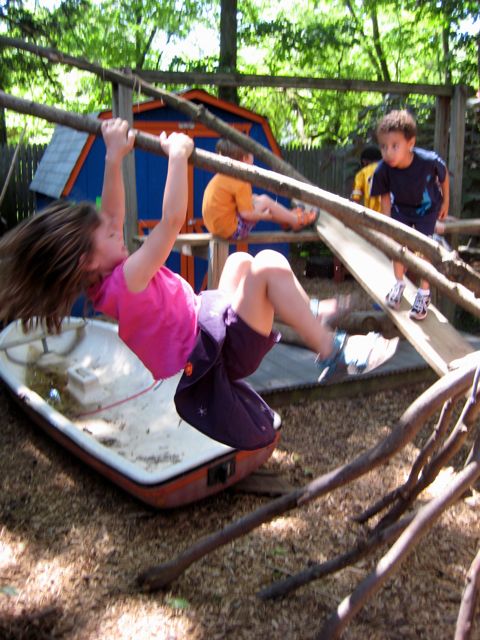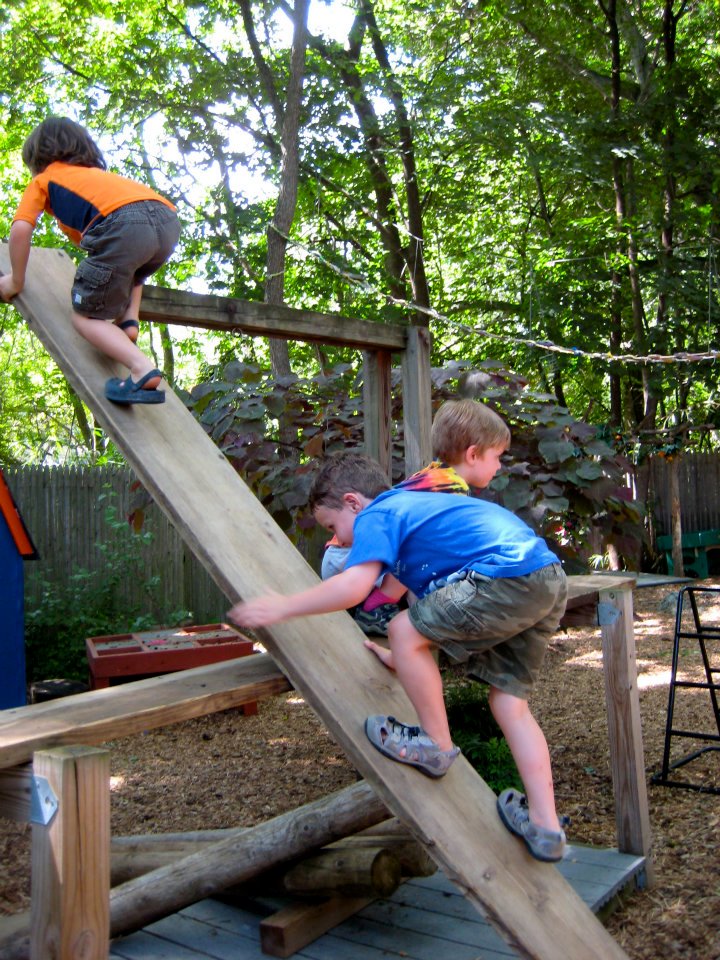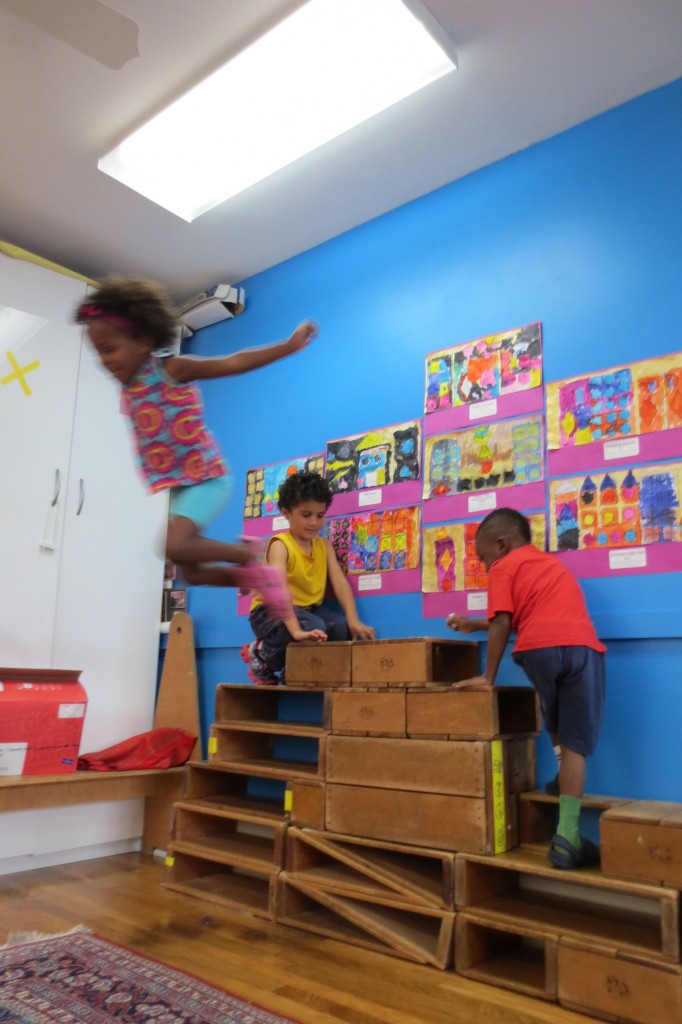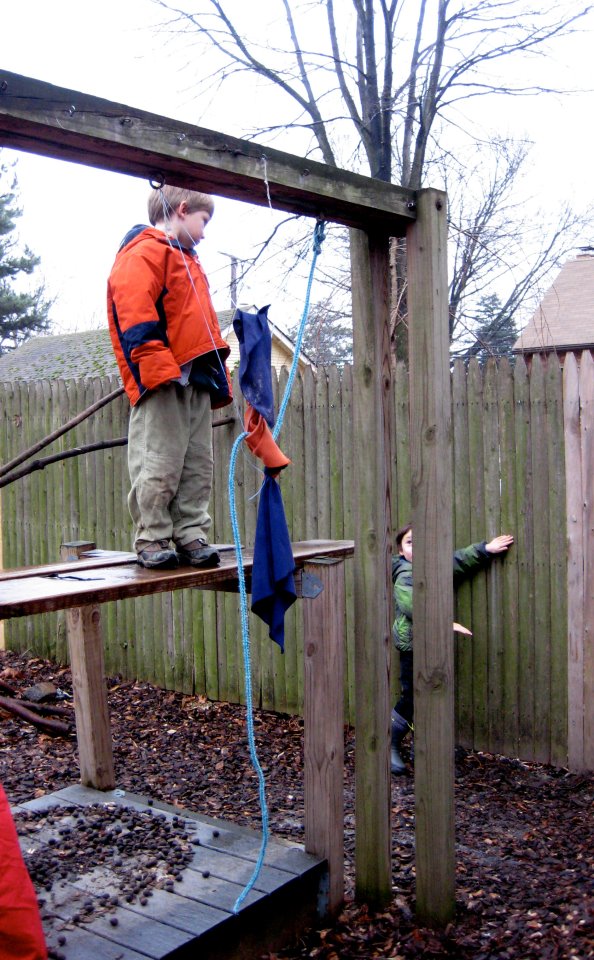Up the Down Slide, Children Assessing Their Own Risk
"What are you building?" "A danger machine, but we can't figure out how to make it really dangerous."
This is a conversation I had with a group of children as they worked with one of our round posts and some boards. They worked diligently pushing the post up a ramp they built with the boards. They were taking turns rolling the post up and holding it in place. They would let it go at the count of three in order to run away from it as it came crashing down, Indiana Jones-style. They worked the system better than any Hollywood stunt doubles, waiting exactly the right amount of time for their friends to get a running start before letting the post roll. It was fluid and simply too safe. For them.
We have a climbing structure that features a double slide. It has a low platform and three methods for climbing including a rope system, a corkscrew ladder, and a climbing ramp. The structure, made by Kompan, is modular. We chose the components to get the most out of the structure with an eye to eventually add another platform, although now we would not add another platform at all. We opt to use open-ended, loose parts on the playground. As is, it is best suited for little ones, ages 2 and 3. In fact it doesn't take long before the children no longer even climb or slide down. They are able to jump from the platform over the climbing options and the slides to land, tumbling, on the ground.
I only recently found out that some playgrounds have rules against climbing up slides or that children can only go down feet first. I couldn't imagine placing those kind of restrictions on our particular structure. More importantly, because we come from a play-based, parent cooperative tradition, we hold true to the practice of creating the time and space for children to listen to their own bodies, hearts, and minds as they work through taking risks (or not!).
This does not mean that the adults are not part of these conversations, we shape the environment after all! We are checking ropes, checking fall zones, and checking the structures the children put together both inside and out. That said, over the years I have come to some important conclusions. To begin, children will determine and assess their own risk -- and they will determine when, if, and how they will approach this risk-taking. Because of this, they will acknowledge and embrace their successes and learn from their mistakes and missteps. And finally, and this is a really important conclusion worth sharing, parents embrace the value of risk-taking. I work with them every day.
Below is a photo of one of my favorite examples of risk assessment conducted by children. They were talking about how far the rope would take them. There were a couple of options they discussed. They thought if he swung forward on the rope from where he was standing, he would hit the shed right in front of him. And then if he swung sideways, as the boy standing by the fence is showing him, he would hit the fence. Now, as an adult watching this, I could have stepped in and said, "Oh you will hit the post before you hit the fence," or "Excuse me, you know that rope is being held in place with dinner napkins and plastic fiber from a tarp." But I didn't, there was no need, because after several minutes of study, they determined that on this day, with this particular configuration, they would pass.
This is what children will do. They decide, independently or while working it out with their friends, how they will approach physical risk. I have more examples of children passing on jumps, leaps, and climbs, or working their way up to taking risks, than I do of children doing the same. So for every catapult or danger machine, there is a tidying up and a lowering of wall heights. Trust in yourself and in others is what we teach and put into practice. This is what creating that open time and space for children to listen to their own bodies, hearts, and minds will give us all.




